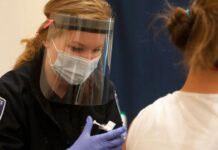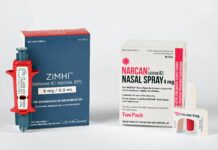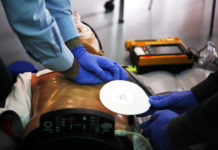
Many leaders of collegiate emergency medical services (EMS) would agree that medical amnesty policies save lives. While empirical proof is elusive due to the complexity of this topic and the numerous variables involved, our experience teaches us that they make our campus communities safer. These policies, which protect students who call for help in medical emergencies involving alcohol and/or drugs, are intended to encourage care-seeking in situations where students may hesitate to call EMS out of fear of punitive action from university administration related to the possession or consumption of alcohol or drugs. While student health and safety are of the utmost priority and concern, colleges often face dilemmas when considering amnesty policies, weighing the risk to students against concerns about university image, liability, and changes in student behavior.
In a national survey cited by the National Institute on Alcohol Abuse and Alcoholism in its factsheet1 on college drinking, almost 60 percent of college students ages 18–22 drank alcohol in the past month, and almost 2 out of 3 of them engaged in binge drinking during that same timeframe.2 It is well-established that college students all over the nation are exposed to and engage in dangerous levels of alcohol consumption. Unfortunately, it is inevitable that sometimes these behaviors can lead to serious illness, injury, and even death. Luckily, collegiate EMS groups are equipped to respond to, stabilize, and if necessary, transport students who are at risk of severe alcohol- or drug-induced damage to a healthcare facility for proper treatment. However, this can only be done if a call is made.
One night when I was a freshman (at Washington University in St. Louis), I received a phone call from a friend whose roommate had become unresponsive. Off-duty at the time, I told him to call the Emergency Support Team (EST), the on-campus collegiate EMS squad. He hesitated. “But what if he gets in trouble for drinking?” Only after a concerted effort to persuade him did he call EST. Repeated interactions like this one confirmed to me that the fear of consequences was a barrier to seeking help. Alarmed, I engaged with fellow EST members and leaders and began working for a change. My hope is that our experience will be informative for other collegiate EMS groups and schools interested in pushing for and adopting a medical amnesty policy. I also hope to demonstrate that collegiate EMS leaders are well-situated in the campus ecosystem to spearhead medical amnesty initiatives because they, in performing their normal duties, interface with all the important stakeholders, including the student body, administrators, staff, police departments, residential offices, Greek Life, and others. As such, collegiate EMS leaders can act as intermediaries among all these distinct groups, brokering the discussions, compromises, and concessions that are needed to reach consensus and to coordinate implementation efforts across stakeholders.
The Campaign
Prior to May 2015, the existing University practices for handling a situation where EST is called for a student due to alcohol use were unclear to many individuals including: myself, fellow EST members, the student body, and even some staff members. Each situation was handled on a case-by-case basis, resulting in significant variability and confusion among students. Usually, the follow-up for a first-time incident involved meeting with a residential college director and/or a counselor in Student Health Services. For repeat instances, the practices varied significantly and no clearly defined policy was ever made available to me or my peers. Over the course of this article, I will describe that our efforts not only helped shape a new policy but also helped to clarify and standardize current practices.
The initial and most crucial step was finding a supportive member of the university administration: EST’s medical director and the head of our student health services. He recounted historical campaigns to push for medical amnesty at Washington University, and he explained that prior attempts often failed due to past administrators harboring significant concerns about university image or convictions that possible consequences are irrelevant to students’ decisions to call help. Further, our medical director helped identify 1) the university officials who had to be convinced if a policy were to be considered, ranging from the judicial administrator to the coordinator for alcohol and drug use to the head of student affairs, and 2) a forum that would be appropriate to make the case for medical amnesty. The forum he recommended was the recently chartered campus-wide Health and Wellness Committee, which was charged with promoting the health, safety, and well-being of students and staff across the university and included representatives from all the relevant stakeholders, including the police department, student health services, the office of residential life, Greek life, the student body, and top decision-makers.
Armed with the benefit of hindsight, I combed through research about medical amnesty policies, reached out to patients, friends, and fellow EST members to collect student narratives, and worked with other passionate advocates to launch a school-wide survey to gauge what fraction of the student body had hesitated to call for help in medical emergencies involving alcohol. According to the survey – undertaken for the purposes of internal policy development – almost 40% of students reported having not called EST out of fear of possible repercussions, a deeply troubling statistic, even after accounting for the survey’s selection bias. I compiled all the information we gathered into a presentation to the Health and Wellness Committee, with the goal of convincing its members that this is a significant issue that must be addressed.
In the presentation, which set the groundwork for efforts that would transpire over the next two years, I described the results of the survey, recounted relevant student narratives, and discussed the medical ramifications of delays in calling for help (eg, further deterioration of mental state, increased risk of injury, etc.). I also discussed why the problem exists on such a widespread scale: students often hear from friends or floormates about students who had EST called to them due to severe intoxication and had to meet with either a residential college director or a counselor from student health services in the days following the incident. While these meetings were not punitive, the perception among the student body was that these students were “getting in trouble.” This made it clear to administrators that a significant dimension to this problem had to do with messaging and transparency as opposed to procedures and protocols. Students can be quick to assume and administrators had failed to adequately communicate that these follow-up meetings were almost exclusively educative, not punitive, and rooted in a culture of support, not of punishment. Only very rarely were students issued judicial sanctions, and only in cases of egregious behavior, such as physical assault or extensive property damage, or repeat offenses.
Comparing our university to our peer schools was a particularly impactful part of the presentation. I used a reference document compiled by Students for Sensible Drug Policy (SSDP), a national organization, to help research medical amnesty policies at colleges around the country. Last updated in 2013, the reference document reported that over 240 schools had some sort of amnesty policy and more than half of those policies offered protection for incidents involving drugs in addition to those involving alcohol (data available upon request from corresponding author). Drawing from their database as well as my own research to corroborate and cross-reference, I produced a summative analysis of amnesty policies at schools that Washington University considers its peers (eg, Cornell, Duke, Harvard). At the time, over two-thirds of our peer schools had some kind of publicly available medical amnesty policy. To many administrators in the room, this was a surprising figure, a much greater number perhaps than when medical amnesty had last been considered at Washington University.
The final substantive element of the presentation was a case study of Cornell University, based on a 2006 publication by Lewis and Marchell3 detailing the passage of their medical amnesty policy and its effects. Their policy, which they branded as the “Good Samaritan” policy, was enacted in 2002. The authors reported that, in the four years after rollout, alcohol-related calls for EMS increased, although alcohol abuse rates remained relatively constant. This increase in care-seeking behavior validated the goal of their policy, as did reported survey results indicating that students were less likely to report “fear of getting an intoxicated student in trouble” as a barrier to calling for help after the enactment of the Good Samaritan policy. Showing this data played a significant role in bringing stakeholders on-board. Without hard evidence from the literature, it would have been much more difficult to demonstrate the efficacy of a medical amnesty approach. Lewis and Marchell3 also included a list of recommendations for other schools interested in tackling the same problem. Their suggestions, reproduced in Table 1, served as an effective framework for mapping out our own course. In concluding the presentation, I posited that problems of perception are fixable and that a medical amnesty policy was a key element of that fix.
Table 1. Lewis & Marchell’s Recommendations to Develop a Medical Amnesty Policy3
Policy Development
This first presentation opened the door to a long series of further presentations in different forums, meetings with key administrators and students, new subcommittees and task forces forming and dissolving, and continual feedback and refinement of our suggested approach. In each meeting, we balanced the risk to student safety with the need to hold students accountable for their actions. Key choices were discussed, sometimes debated, and eventually consensus was reached on the following policy items:
Scope of Protection
We determined whether the protection would apply to incidents involving alcohol only or illicit drugs as well. While my fellow EST members and I, understanding that the highest medical risk comes from situations involving both alcohol and drugs, pushed for the inclusion of protection for drugs, administrators felt they could not comfortably provide that level of flexibility around strict university policies. We acquiesced because we did not want the question of drug protection to derail the entire process, and decided that alcohol was a significant first step that could be built upon with the future potential inclusion of drugs.
Nature of Protection
We decided that the university could extend protection from University disciplinary action, in the form of judicial or student conduct sanctions for violations of alcohol policies, to students who call for help and for the patients for whom help is called in emergencies involving alcohol.
Follow-up to Incidents
We debated what types of follow-up are appropriate and how to mitigate them from creating a disincentive to call for help. We agreed that educational follow-up and counseling, meant to support the student and prevent future incidents, was part of the responsibility of a university, and that these should continue but be more clearly branded as completely non-punitive both during these meetings and in messaging to the wider community. We agreed that students repeatedly involved in these incidents would face additional consequences but would also receive additional support (eg, a referral for substance abuse counseling).
Exceptions to Protection
We decided that students who cause physical harm, engage in sexual assault or violence, property damage, distribution of drugs, hazing, or other criminal activity should be exempted from protection against sanctions. While the policy does cover minors, separate University policy requires that parents be notified of any medical attention a minor received on campus, including EST.
Application of Protection to Organizations
We discussed whether organizations should receive amnesty in addition to individuals. Because incidents in Greek Life houses were among the most common and troubling cases, due to both excessive drinking and fear of sanctions against the fraternity hosting a party in which a student requires medical attention, we agreed that both individuals and organizations should receive amnesty for seeking help under the protocol. Organizations referenced in this section include Greek Life groups, student groups, sports teams, and other similar groups.
Application of Protection to Off-Campus Incidents
Due to the presence of dangerous levels of alcohol consumption both on campus and in the off-campus apartments surrounding campus, we decided that the protocol should apply both on and off campus, although we noted that EST does not respond off-campus and that the University could not protect students from action by local law enforcement.
Name and Classification of Policy
We debated what to name the policy, an important decision because the impact of medical amnesty on encouraging students to call for help depends largely on effective messaging. In order to call something an official University “policy” at Washington University, it requires a long, protracted process that we decided would unnecessarily delay implementation. Instead, we opted to call it a “protocol” instead, which would allow for the same level of protection and messaging while greatly expediting the process. After surveying names of policies at other institutions, we settled on the Medical Amnesty and Active Bystander Protocol. The addition of “Active Bystander” was meant to encourage positive care-seeking behavior on the part of bystanders during a potential emergency. We avoided using “Good Samaritan” as many other schools do because that moniker can be perceived as having religious connotations.
§
It is important to note that the development of this policy fits into a broader strategy for campus safety around alcohol use, and the Health and Wellness Committee devoted resources to studying and improving the availability of counselors and other resources to support students.
I wrote the first draft of the protocol using Georgetown University’s Medical Amnesty and Good Samaritan Policy (which is no longer publicly available since it was added to their Code of Student Conduct4) because its provisions and language seemed most to match the decisions we had made. Starting from another institution’s policy as a foundation facilitated the process by giving us a structure in which to codify our own priorities and practices. After several rounds of revisions, legal consultations from University counsel, and departmental approval from several offices, Washington University announced its Medical Amnesty and Active Bystander Protocol5, effective May 11, 2015.
Implementation
While I have focused on the development and passage of medical amnesty in this piece, just as important is the rollout of a policy once it has been instituted, particularly the messaging and awareness campaigns that accompany and follow the initial announcement. It is critical to use multiple channels (eg, email, mail, posters, fliers, tabling, residential programming, etc.) and reach out to both incoming freshmen as well as current students who have been at the school at a time when it did not have medical amnesty. Ensuring that the student body understands the policy, and the protections it offers, is the only way to combat the perception that calling for help in a medical emergency could lead to administrative consequences. I believe that Washington University struggled with, and is still struggling, to achieve this goal. In the semesters after the Medical Amnesty and Active Bystander Protocol was announced, students often reported being confused about what the policy means and a perception of “fake amnesty” emerged in some social circles due to several factors that are not entirely clear. Inconsistent translation of the protocol into changes in disciplinary practices, particularly in Greek Life, almost surely contributed. For instance, for quite some time after the protocol was implemented, some Greek Life groups were still put on social probation after EST was called during a party.
In retrospect, I wish EST and the relevant staff members had 1) been more active, more standardized, and clearer in our messaging to the student body, and 2) ensured that the protocol would be operationalized consistently across all sectors of campus. With time, these missteps are being rectified through increased awareness efforts and regular review and oversight of University practices, but they will likely delay any positive impact the protocol may have. It is too early to collect enough data to perform a robust statistical analysis of the effects of medical amnesty on care-seeking behavior, although I expect a thorough retrospective analysis will be conducted over the next few years. This analysis should include 1) reviewing call data to determine if the number of calls for intoxicated patients increased at a statistically significant level while controlling for temporal variation and changes in the size of the student body and 2) periodic assessments of student awareness of and attitudes about the protocol. Before graduating, I passed the onus for this work on to younger members of EST to ensure continuity.
Paving the Path
Given how crucial learning from other schools was for us, I hope some of the hundreds of universities that still do not have medical amnesty policies can learn from our experience as they navigate this path for themselves. National organizations, such as Students for Sensible Drug Policy and the National Collegiate EMS Foundation, should consider creating a consultancy arm that can help agencies design and push for policies at their institutions.
While it was a long and arduous process, spearheading the campaign for medical amnesty was a highlight of my collegiate EMS experience. Pending quantitative evidence, I am hopeful that our protocol will make a difference. Even if one student is more likely to call for help in a life-threating situation, then all my efforts will have been worthwhile.











